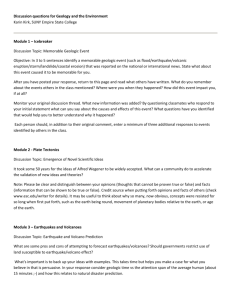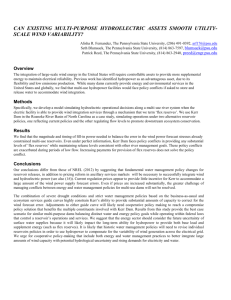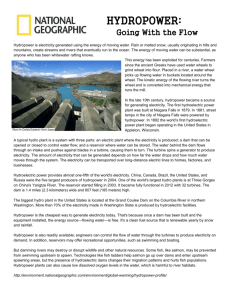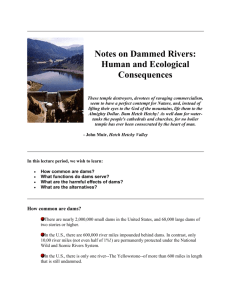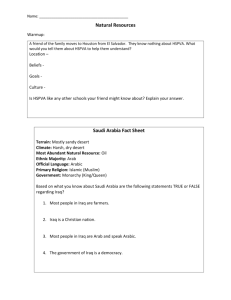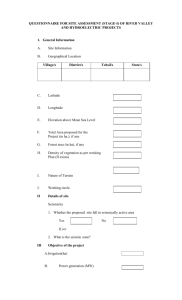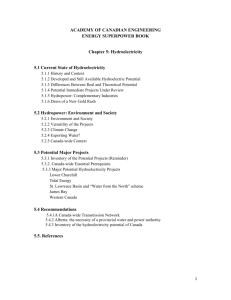Hydroelectric Energy Lesson
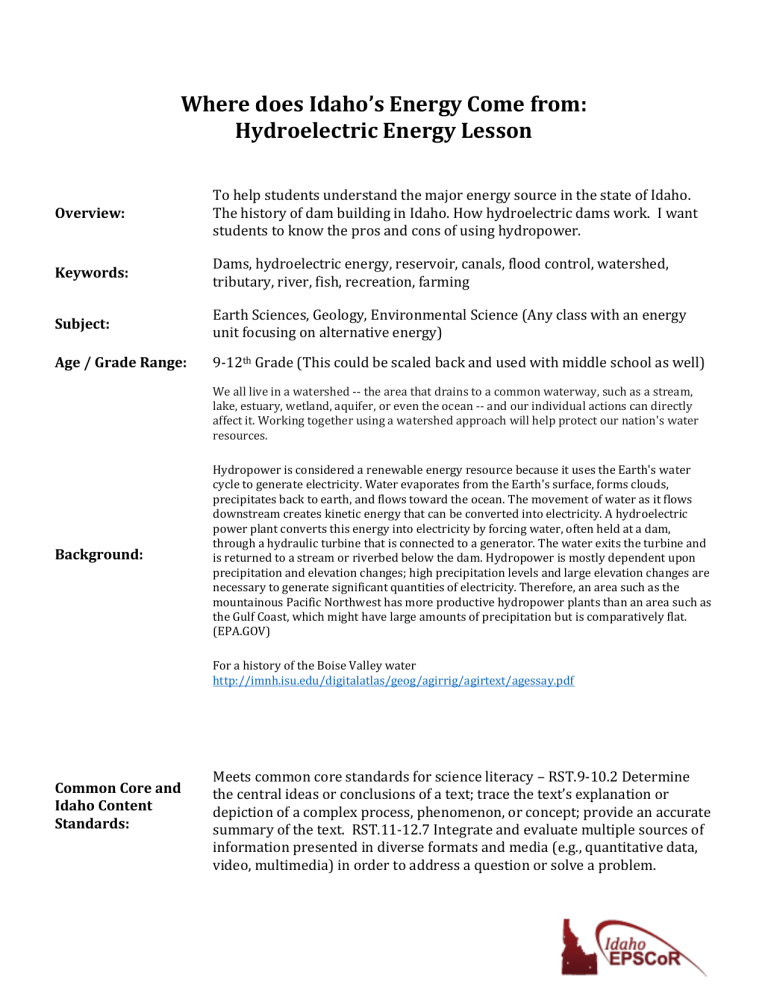
Where does Idaho’s Energy Come from:
Hydroelectric Energy Lesson
Overview:
Keywords:
To help students understand the major energy source in the state of Idaho.
The history of dam building in Idaho. How hydroelectric dams work. I want students to know the pros and cons of using hydropower.
Dams, hydroelectric energy, reservoir, canals, flood control, watershed, tributary, river, fish, recreation, farming
Subject:
Earth Sciences, Geology, Environmental Science (Any class with an energy unit focusing on alternative energy)
Age / Grade Range: 9-12 th Grade (This could be scaled back and used with middle school as well)
We all live in a watershed -- the area that drains to a common waterway, such as a stream, lake, estuary, wetland, aquifer, or even the ocean -- and our individual actions can directly affect it. Working together using a watershed approach will help protect our nation's water resources.
Background:
Common Core and
Idaho Content
Standards:
Hydropower is considered a renewable energy resource because it uses the Earth's water cycle to generate electricity. Water evaporates from the Earth's surface, forms clouds, precipitates back to earth, and flows toward the ocean. The movement of water as it flows downstream creates kinetic energy that can be converted into electricity. A hydroelectric power plant converts this energy into electricity by forcing water, often held at a dam, through a hydraulic turbine that is connected to a generator. The water exits the turbine and is returned to a stream or riverbed below the dam. Hydropower is mostly dependent upon precipitation and elevation changes; high precipitation levels and large elevation changes are necessary to generate significant quantities of electricity. Therefore, an area such as the mountainous Pacific Northwest has more productive hydropower plants than an area such as the Gulf Coast, which might have large amounts of precipitation but is comparatively flat.
(EPA.GOV)
For a history of the Boise Valley water http://imnh.isu.edu/digitalatlas/geog/agirrig/agirtext/agessay.pdf
Meets common core standards for science literacy – RST.9-10.2 Determine the central ideas or conclusions of a text; trace the text’s explanation or depiction of a complex process, phenomenon, or concept; provide an accurate summary of the text. RST.11-12.7 Integrate and evaluate multiple sources of information presented in diverse formats and media (e.g., quantitative data, video, multimedia) in order to address a question or solve a problem.
Goals:
Objectives:
Materials:
Set up:
Time/ Duration:
Introduction
(Engage):
Students will be looking at the watersheds in our area, understanding why dams were built, and looking at how much energy we get from hydroelectric power. They will also be diagraming and understanding hydroelectric power plants.
What are the watersheds that supply the Treasure Valley with water and energy? Where does Idaho get the majority of its power from? How does a hydroelectric dam work?
Students will be able to identify the watersheds of the Boise, Payette,
Snake, and Columbia Rivers.
Students will understand why dams were built in Idaho.
Students will know how many dams and reservoirs are on the Boise and Snake Rivers and which ones contribute to our power here in the
Treasure Valley.
Students will understand the basics of the inside of a hydroelectric power plant and how that power gets to us.
Maps of the watersheds you want to use.
Internet access or printed materials of hydroelectric dams.
Access to information from Idaho Power about power sources.
paper for intro activity
see the additional resources section for websites
Teacher would need to print materials, maps and worksheet or get access to the internet for part of it.
This lesson will take two block periods of 90 minutes each.
To begin this lesson I would start with the idea of a watershed and where the water comes from to create reservoirs. I would do the activity where students crumple up paper and run water over it to mimic the effect of a watershed, and then they would be looking at maps and doing a map activity of the different waterways in
Idaho.
Activity (Explore):
Explanation:
After students do the introductory activity on watersheds they will be given a work sheet with questions about the watershed in our area. They will have to look up and find the information online. You can use preprinted maps also. Next, students will get onto the Idaho Power Website and will be looking at how much power comes from hydropower and which dams supply that power. Next students will be locating all the hydroelectric dams that contribute to our power supply. Next students will be looking into how hydropower works by drawing a diagram of a hydroelectric facility including the generator used and explaining how this energy gets to their homes. Lastly they will explore the pros and cons of using hydropower. I expect this to take between one and two class periods. I would end with a discussion of how hydropower has impacted us here in the Treasure Valley and how our lives might be different if we did not have it.
Students will be using maps of different watersheds to answer questions and doing online research.
Students explain their understanding of concepts and processes.
Students may not know all of the rivers and streams or areas that make up our watersheds and which rivers have dams or how many. Teacher will need to go over the basics of how hydroelectricity gets to our homes.
Elaboration:
We will be discussing different types of alternative energy. We will also look at other impacts the rivers have on our area more with watersheds and water usage.
Evaluation/
Assessment:
Material taught would end up on a future exam. I would also be able to evaluate based on in class discussions.
Additional resources: I use the Idaho power website, the Bureau of Reclamation,
Army Corps of Engineers website, any website with hydropower diagrams, and any website with maps for the map portion. In my class my students will using electronic devices to look up information but you can substitute with preprinted material.
Family/ Community Connections: If possible we could take a tour of a hydroelectric facility or do a virtual tour online.

